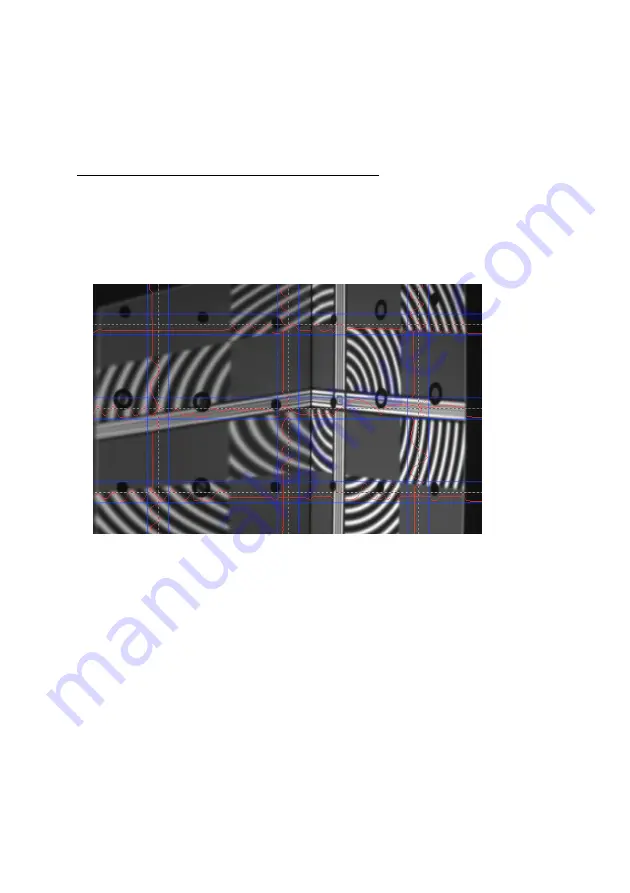
5. Click “Calibrate“ in order to calibrate the camera.
In this step the software computes the position and orientation of the camera, as well as the focal
length and distortion parameters of its lens.
6. From this moment on, do not move or adjust anything at the scanner – otherwise you will have to
repeat the calibration.
3. Menu
“
Structured
Light
Scanning
“: Calibration of the projector
1. When you open the Structured Light Scanning menu, the projector will again show the setup
pattern, and both projector and camera will be set back to the settings you have made in step 1.
2. Select a profile (recommended: “default“).
3. Check the camera image again. In those areas that show the circular wave pattern, the red intensity
curves must not be cut off at the blue borders. Carefully adjust the lens aperture if necessary, but be
sure not to change the focus.
4. Click “Calibrate” in order to calibrate the projector.
In this step the software measures the position and orientation of the projector, its focal length and
distortion coefficients, as well as optical transmission properties and delays of the whole system.
Your scanner is now calibrated. This refers to the position and orientation of camera and projector relative to
each other, and the focus and brightness settings. You may move, rotate and tilt the scanner as a whole, and
you can close and restart the DAVID software, without losing the calibration.
However, if you rotate camera or projector with respect to each other or change the focus (e.g. in order to
scan much smaller or larger objects), you will have to repeat the whole calibration procedure.
10
3DPE.ir















